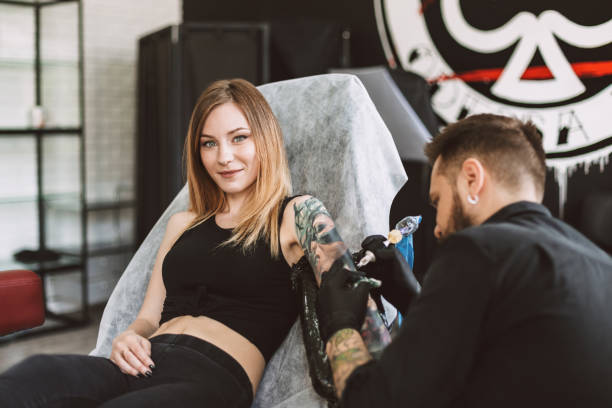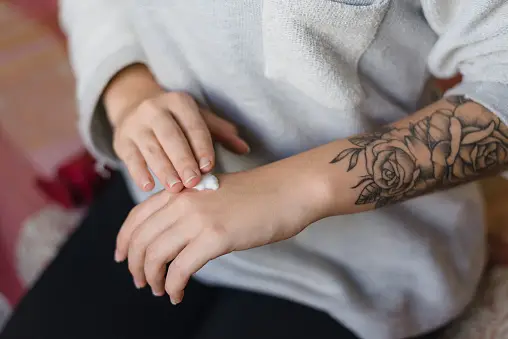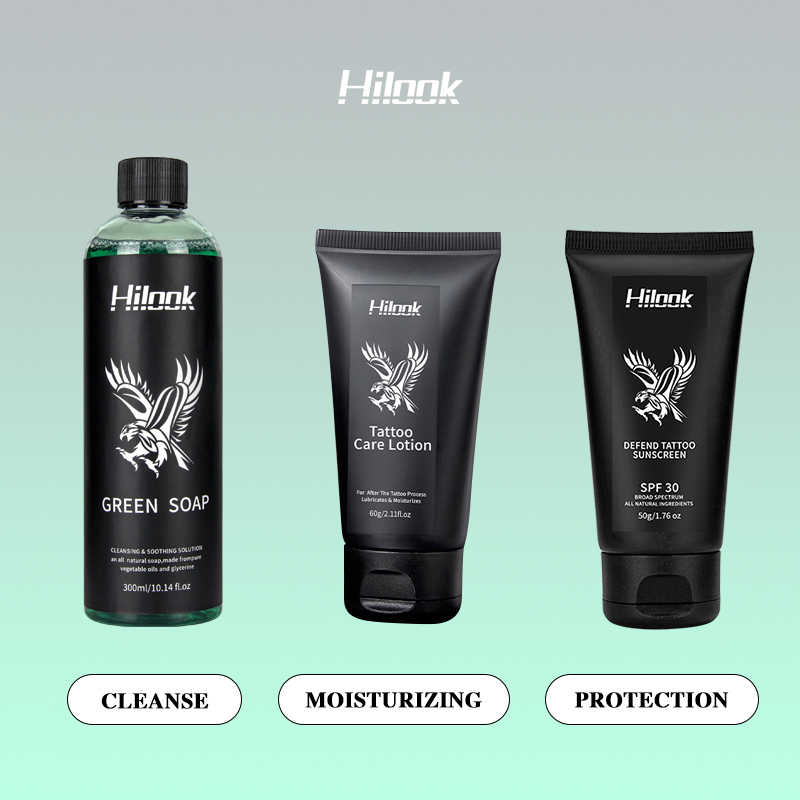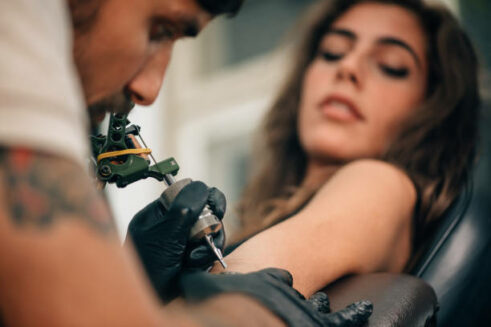Introduction
Tattoos have become increasingly popular as a means of personalization and self-expression. People from all walks of life use tattoos to showcase their individuality, commemorate important events, or simply adorn their bodies with beautiful artworks. However, as much as people carefully plan their tattoos, errors can still occur during the tattooing process, leading to the need for tattoo error correction. Additionally, proper care is crucial to maintaining the quality and longevity of your tattoo, which is where the significance of tattoo care products comes into play. In this comprehensive guide, we will explore the personalization and expression through tattoos, the reasons behind the need for tattoo error correction, and the importance of using tattoo care products to ensure your tattoo looks its best for years to come. Whether you are a tattoo enthusiast or considering getting your first tattoo, this guide will provide valuable insights to help you navigate the world of tattoo error correction and care.

Types of Tattoo Errors
Tattoos are permanent works of art that should be carefully considered and executed. However, there are instances when errors occur during the tattooing process, resulting in undesired outcomes. In this section, we will explore the three common types of tattoo errors: fading and color distortion, unsatisfactory design choices, and improper tattooing techniques.
A. Fading and Color Distortion:
One of the primary concerns with tattoos over time is fading and color distortion. As the skin ages and is exposed to sunlight, the pigments in the tattoo can degrade, leading to a less vibrant appearance. Additionally, improper aftercare, such as excessive exposure to water or failure to apply sunscreen, can exacerbate these issues.
To address fading and color distortion, there are several solutions available. Tattoo touch-ups can reintroduce fresh ink into faded areas, reviving the vibrancy of the design. Another option is laser tattoo removal, which effectively removes unwanted pigments to make way for a new tattoo. However, it’s essential to consult a professional tattoo artist or dermatologist to determine the most suitable course of action for your specific case.
B. Unsatisfactory Design Choices:
Another type of tattoo error stems from unsatisfactory design choices. This may involve selecting a design that doesn’t match your expectations, choosing an inexperienced artist, or rushing into a design without thoroughly considering its long-term implications. Regretting a tattoo is not uncommon, but fortunately, there are remedies available.
If you find yourself dissatisfied with a tattoo due to design choices, you have a few options for correction. One common approach is incorporating the unwanted design into a larger, more desirable piece, effectively transforming it into a cohesive image. Alternatively, tattoos can be covered up with a new design or modified through the addition of additional elements to enhance or alter the original concept. Consulting with an experienced tattoo artist is crucial in determining the best path for rectifying unsatisfactory design choices.
C. Improper Tattooing Techniques:
The third type of tattoo error we’ll address is improper tattooing techniques. Unprofessional artists or those lacking experience may employ incorrect techniques, resulting in subpar results. These errors can manifest in inconsistent line work, uneven shading, or even the placement of the tattoo itself.
Correcting errors arising from improper tattooing techniques may require additional sessions or corrective procedures, depending on the severity of the issue. Skilled tattoo artists can often rework and refine the original tattoo to correct any noticeable errors, ensuring that the final result is satisfactory.
In conclusion, three common types of tattoo errors are fading and color distortion, unsatisfactory design choices, and improper tattooing techniques. Each type of error requires a unique approach to rectify and restore the tattoo to its desired state. Consulting with a professional tattoo artist or dermatologist is crucial when encountering these issues to determine the most suitable solution for your specific circumstances.

Approaches to Tattoo Error Correction
Tattoo cover-up and repair are essential aspects of correcting tattoo errors. An error in a tattoo can cause dissatisfaction and affect your self-confidence. However, with the right approaches, you can transform your unwanted or flawed tattoo into a stunning piece of art. In this section, we will explore two primary approaches to tattoo error correction: tattoo cover-up and tattoo repair and modification.
A. Tattoo Cover-Up
One effective way to correct a tattoo error is through a cover-up. This approach involves concealing the original tattoo with a new design that blends seamlessly with your skin, effectively hiding the previous mistake. When considering a tattoo cover-up, there are a few key factors to keep in mind:
– Concealing the original tattoo with a new design: The new design should be carefully planned to ensure proper coverage of the existing tattoo. It’s essential to consult with a skilled tattoo artist who specializes in cover-ups to discuss your options and desired outcome.
– Key factors in design and pattern selection: The success of a tattoo cover-up heavily relies on the design and pattern chosen. Opting for darker and more complex designs can effectively mask the tattoo underneath. The size and placement of the new design should also be considered, as they will impact the coverage and visibility of the original tattoo.
B. Tattoo Repair and Modification
Another approach to tattoo error correction involves repairing and modifying the existing tattoo. This method works particularly well for minor errors or areas that require enhancement. To ensure optimal results, follow these guidelines:
– Seeking a professional tattoo artist: When it comes to repairing and modifying tattoos, it is crucial to consult a professional tattoo artist with the skill and expertise in this specific area. They possess the knowledge and experience to identify the best techniques to correct flaws or enhance the existing tattoo.
– How to restore color and details: Restoring color and details in a tattoo is a delicate process. A skilled tattoo artist will use advanced techniques such as color blending, shading, or re-outline to correct any color fading or blurred lines. This meticulous approach will help restore the vibrancy and clarity of the tattoo, leaving you with a result that feels fresh and rejuvenated.
By understanding the approaches to tattoo error correction, you can confidently address any unwanted or flawed tattoos. Whether you choose a cover-up or repair and modification, remember to consult a professional tattoo artist who can guide you through the process and ensure a successful outcome.

Role of Tattoo Care Products in Correction
A. Importance of using tattoo care products:
When it comes to tattoo error correction, using the right tattoo care products is of utmost importance. These products play a significant role in promoting proper healing, preventing infections, and maintaining the overall health of your skin. Here are some reasons why using tattoo care products is essential during the correction process:
– Care during the correction process:
Correcting a tattoo involves various procedures, such as tattoo cover-ups, touch-ups, or laser removal. These processes can be intensive and potentially damaging to the skin. Using tattoo care products can help to soothe and protect the skin during the correction process, minimizing discomfort, swelling, and irritation. These products often contain ingredients like aloe vera, witch hazel, or chamomile that can provide much-needed relief and aid in the healing process.
B.Recommended products for tattoo recovery:
After undergoing a tattoo correction procedure, it is crucial to follow a proper aftercare routine to ensure optimal healing and minimize the risk of complications. Here are some recommended tattoo care products for tattoo recovery:
- Tattoo aftercare cream: Tattoo aftercare cream: Specifically formulated for tattoo healing, these cream create a protective barrier over the tattoo, preventing bacteria from entering the wound. Look for products containing ingredients like panthenol, which helps promote skin regeneration, or vitamin E, which can aid in minimizing scarring. Avoid petroleum-based ointments as they can clog pores and hinder the healing process.
- Non-fragrant moisturizers:Keeping the skin moisturized is crucial during the tattoo recovery process. Non-fragrant moisturizers are gentle and help maintain proper hydration levels, preventing dryness and itching. Look for products that are hypoallergenic and contain natural ingredients like shea butter or coconut oil.
- Gentle antibacterial soap: Keeping the tattooed area clean is essential to prevent infections. Use a mild, fragrance-free antibacterial soap when washing the tattooed area. This will help remove any impurities, excess ink, or blood clots that may interfere with the healing process. Avoid harsh soaps or cleansers that can cause further irritation or dryness.
- Sunscreen:Protecting your tattoo from harmful UV rays is crucial to prevent fading and damage. After the correction process, apply a broad-spectrum sunscreen with a high SPF specifically designed for tattoos. Look for sunscreens with ingredients like zinc oxide or titanium dioxide, as these provide better protection against harmful UVA and UVB rays.
In conclusion, using the right tattoo care products during the correction process is essential to ensure proper healing and maintain the health of your skin. Follow a thorough aftercare routine, including the use of recommended products, to maximize the outcome of your tattoo correction and to preserve the longevity of your newly corrected tattoo.

Considerations for Tattoo Error Correction
When it comes to correcting tattoo errors, there are a few crucial points to consider that can greatly influence the outcome and overall success of the correction process. In this section, we will delve into the pre and post-care preparations, discuss the recovery timeline after correction, and provide valuable advice to prevent the recurrence of similar issues in the future.
A. Pre and post-care preparations:
– Consultation: Before undergoing any tattoo error correction procedure, it is essential to consult with an experienced tattoo artist or dermatologist. They can assess the nature of the error and advise on the best course of action for correction.
– Skin preparation: Prior to correction, it is important to ensure that the skin is healthy, clean, and free from any pre-existing skin conditions or infections. Following the tattoo artist’s guidelines for pre-care, which may involve abstaining from alcohol, blood-thinning medications, or excessive sun exposure, can help optimize the skin’s condition for successful correction.
– Post-care routine: Once the correction procedure is complete, it is crucial to follow a diligent post-care routine to promote proper healing and minimize the risk of complications. This may involve keeping the treated area clean, applying recommended ointments or creams, avoiding excessive sun exposure, and refraining from picking or scratching the area.
B. Recovery timeline after correction:
– Initial healing phase: Following tattoo error correction, the initial healing phase usually takes around 2-3 weeks. During this time, it is normal to experience redness, swelling, and possibly scabbing in the treated area. It is important to be patient and allow the skin to heal naturally without interfering with the scabs.
– Complete healing and final results: The complete healing process may take several weeks to a couple of months, depending on the individual’s healing ability and the complexity of the correction. It is essential to keep the treated area moisturized, protect it from direct sunlight, and follow any additional instructions provided by the tattoo artist or dermatologist. The final results of tattoo error correction will gradually become visible as the skin fully recovers.
C. Advice to prevent recurrence of similar issues:
– Thorough research and proper artist selection: Before getting tattooed, it is crucial to thoroughly research the tattoo artist’s portfolio, reputation, and hygiene practices. Choosing a skilled and experienced artist can significantly reduce the likelihood of errors and the need for correction.
– Clear communication: During the tattooing process, ensure open and clear communication with the artist. Express your ideas, concerns, and expectations, allowing them to create a design that aligns with your vision. This minimizes the risk of misunderstandings and potential errors.
– Patience and realistic expectations: Tattoo error correction is a process that requires time, patience, and realistic expectations. Avoid rushing into any correction procedure, and be prepared for multiple sessions if needed. Understanding that perfection may not always be attainable and embracing the uniqueness of each tattoo can help prevent any future disappointments.
In conclusion, considering the mentioned factors of pre and post-care preparations, understanding the recovery timeline, and following advice to prevent recurrence are vital when it comes to tattoo error correction. By keeping these considerations in mind, you can ensure a successful correction process and maintain the overall health and appearance of your tattoo.

Conclusion
In conclusion, getting a tattoo is not just a simple design etched on your skin; it is a part of your lifelong journey. The decision to get a tattoo should be well thought out and should represent something meaningful to you.
However, if you find yourself dissatisfied with a tattoo, it is crucial to seek professional help promptly. Tattoo artists, especially those with experience in cover-ups and corrections, can work their magic to transform your ink into something you truly love. It’s essential not to let any mistakes or regrets linger, as early intervention can lead to better results.
Looking ahead, the future of tattoo care products holds tremendous promise. Innovations in tattoo aftercare are constantly being developed to enhance the healing process and preserve the longevity of your tattoo. From advanced ointments and salves to cutting-edge skincare technologies, the industry is continually evolving to provide the best care possible for your ink. Keeping up with these advancements and incorporating them into your tattoo aftercare routine can significantly improve the overall appearance and health of your tattoo.
Remember, a tattoo is a work of art on your body, and it deserves the utmost attention and care. By understanding the significance of tattoos as a lifelong commitment, promptly seeking professional assistance for any correction needs, and staying updated on the future and innovation of tattoo care products, you can ensure that your ink remains a source of pride and joy for years to come.














